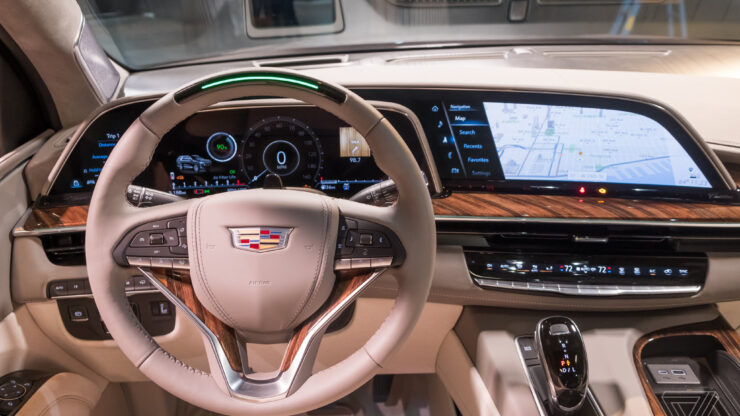General Motors have revealed the plan for vehicles that can be upgraded-software, with a new platform – GM Ultifi – promising cars and improving SUVs over time, and new potential sources of income. Built on the Atop GM (VIP) vehicle intelligence platform, the latest iteration of the company’s electrical architecture, Ultifi will help distinguish further software capabilities from the hardware in the future.
Instead of a long time, the car you took on the dealer is the same car that you trade a few years later. Now, with the increasing update of over-the-water – a shift was driven in a small part by Tesla, although it was taken by other car makers – it no longer happened – or considered acceptable by vehicle buyers.
The transition, however, has demanded the way of thinking that was changed on how the vehicle platform was developed. Instead of the software system that is connected to the increasingly complex can be cables, which are designed to be replaced in generations based on generation rather than enhanced, new models usually support updates with high-speed network firmware and over-the-air (OTA). That’s the key announcement of Ultifi GM today.
“Today’s VIP-enabled vehicles provide over-the-water capabilities, many data bandwidth, strong cybersecurity security and fast processing personnel,” the car maker said. “On this foundation, the GM engineer will separate the main software into a new centralized layer that acts as a strong hub for the vehicle system. The Ultifi platform will then allow the acceleration of the development and dissemination of software and applications by air to millions of customers, without affecting controls Basic hardware. “
For the owner, it will mean a more like a smartphone, promise of GM. Routine updates will be pushed out, along with new applications, potentially reducing the number of time vehicles that must be spent at the dealer served. “Customers can buy a car and let the car like that, or with our agreement can improve the car over time,” Scott Miller, VP from vehicles defined on software at GM, explained. “Today, the car is activated by software. With Ultifi, they will be defined by it.”
It will also unlock the purchase of post-shipping new features, potentially. For example, GM will be able to use Ultifi to offer an unspecified option of vehicles on the first day, such as navigation, new teenage drivers features, and more. The company is looking at using “autotenticated accounts,” which has the potential to share one purchase or subscription in several GM vehicles.
If you want to try super cruise for travel, for example, Ultifi-capable vehicles can offer temporary access and one-time purchase – assuming, that is, the car has the right hardware. Ultifi will use a consistent software platform, but automatically configure the ability of running vehicles. This will be able to change some performance characteristics – change, say, sports calibration or even adjust the drive mode based on real time weather conditions – although no one changes the core certification parameters.
Down, because new features are developed, they will also be able to update existing vehicles – assuming there is hardware compatibility too. Example GM that has the potential to use a cabin camera for facial recognition to start a car, adjust the settings of teen drivers, and connect vehicles with a smart home system. With a persistent link to the Cloud, GM will be able to provide comfort tweaks such as automatically turning off the sunroof if you know it will rain in the parked SUV, or use a cabin camera to see when you have onboard children and automatically turn on the child’s key.
“Similarly, Cloud connectivity has the potential to extend to V2X or vehicle applications to everything to help advance the goal of GM from zero crashes and zero congestion,” GM advice. “Through communication with other connected devices and infrastructure, drivers can be warned for danger or change the road conditions and be able to effectively time traffic signals.”

